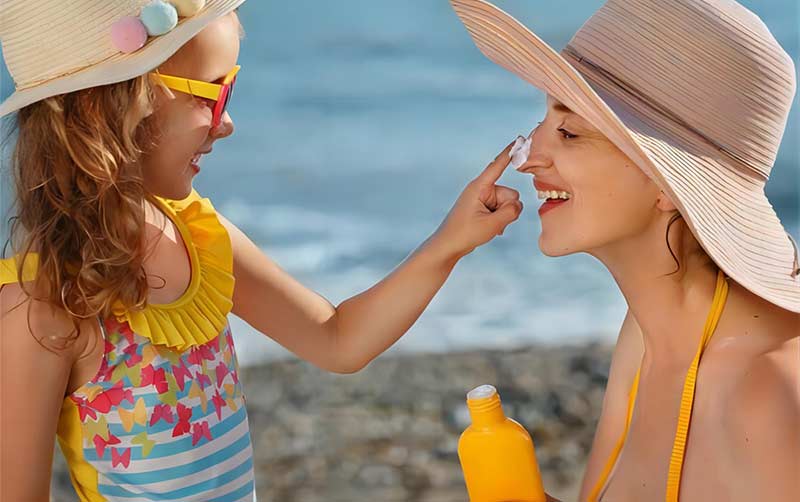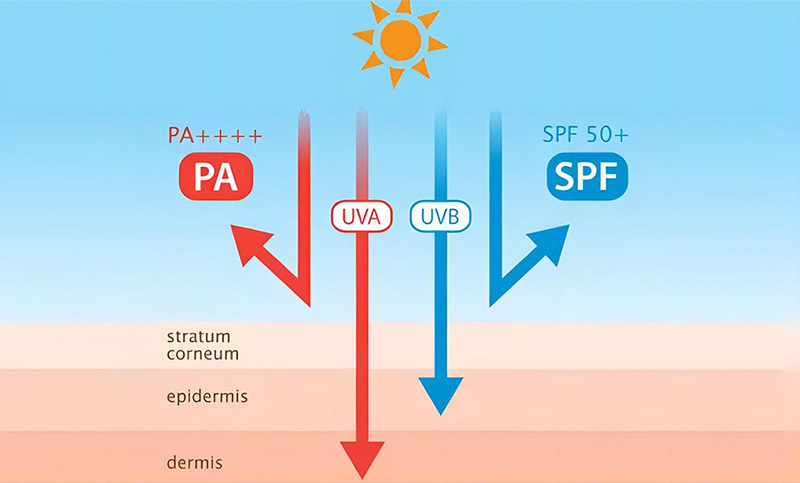Sun protection is a must-have for modern women throughout the year. Sun protection can not only reduce the damage of ultraviolet rays on the skin, but also avoid skin aging and related skin diseases. Sunscreen ingredients are usually made up of physical, chemical, or a mixture of both types and provide broad spectrum UV protection. In order to help you to better buy their own sunscreen in the future, today take you from the chemical active ingredients and physical active ingredients to analyze the effective ingredients of sunscreen.
Chemical active component
Octyl methoxycinnamate
Octyl methoxycinnamate (OMC) is one of the most commonly used sunscreen agents. Octyl methoxycinnamate (OMC) is a UVB filter with excellent UV absorption curve of 280~310 nm, high absorption rate, good safety, minimal toxicity, and good solubility to oily raw materials. Also known as octanoate and 2-ethylhexyl 4-methoxycinnamate. The compound has been approved as a cosmetic ingredient in the United States and the European Union (EU) at concentrations of 7.5-10%.
Benzophenone-3
Benzophenone-3 (BP-3) is an oil-soluble broad-band organic sunscreen that absorbs both UVB and short UVA rays. BP-3 is rapidly oxidized under ultraviolet radiation, reducing its efficacy and producing large amounts of reactive oxygen species. In the United States, the maximum allowable concentration of BP-3 in sunscreen is 6%.
Benzophenone -4
Benzophenone-4 (BP-4) is commonly used as an ultraviolet absorber at concentrations up to 10%. BP-4, like BP-3, is a benzophenone derivative.
4-methylbenzyl camphor
4-methylbenzylidene camphor (4-methylbenzylidene camphor, 4-MBC) or enzacamene is an organic camphor derivative used as a UVB absorber in sunscreens and other cosmetics. Although the compound is not approved by the US Food and Drug Administration (FDA), other countries allow the use of the compound in concentrations up to 4%.
4-MBC is a highly lipophilic component that can be absorbed through the skin and is present in human tissues, including the placenta. 4-MBC has the effect of estrogen endocrine disruption, affecting thyroid axis and inhibiting activity of AChE. Sunscreen containing these ingredients should therefore be used with caution.
3-benzal camphor
3-benzylidene camphor (3-BC) is a lipophilic compound closely related to 4-MBC. The maximum concentration of it used in sunscreen products in the European Union is 2%.
Similar to 4-MBC, 3-BC is also described as an estrogen-disrupting agent. In addition, 3-BC has been reported to affect the CNS. Again, sunscreen containing these ingredients should be used with caution.
Octylene
Octocrtriene (OC) is an ester belonging to the cinnamate group that absorbs UVB and UVA rays, with concentrations up to 10% in sunscreens and daily cosmetics.
Physical active component
The physical active ingredients used in sunscreens are usually titanium dioxide (TiO 2) and zinc oxide (ZnO), and their concentrations are usually 5-10%, mainly by reflecting or scattering the incident ultraviolet radiation (UVR) to achieve the purpose of sunscreen.
Titanium dioxide
Titanium dioxide is a white powdery mineral composed of titanium and oxygen. Titanium dioxide is widely used in food and cosmetics, especially because of its whiteness and the efficacy of UV sunscreens.
Zinc oxide is a white powder with protective and purifying properties. It is also a protective UV sunscreen that reflects both UVA and UVB rays. In addition, zinc has anti-inflammatory, astringent and drying properties. Zinc oxide, a sunscreen recognized as safe and effective by the U.S. Food and Drug Administration, is one of them.
After the description of this article, do you have a better understanding of the active ingredients of sunscreen? Please contact me if you have any other questions.
Post time: May-30-2024




